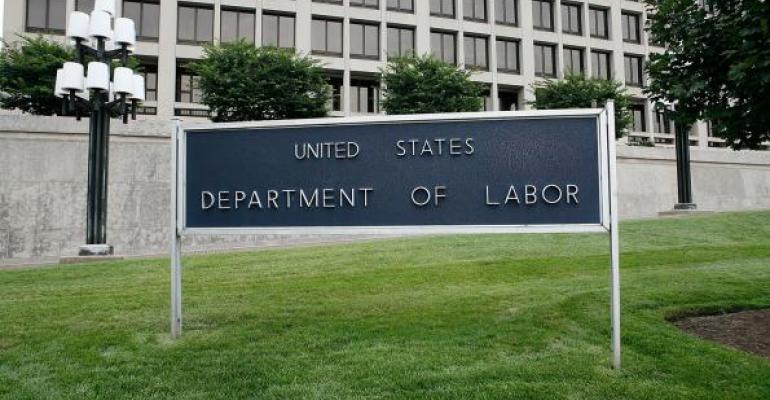By Rob Klapprodt
Despite the daily deluge of headlines questioning the ultimate fate of the Department of Labor's fiduciary rule, it is and has been in effect since June. As the debate continues across the Labor Department, Congress, and the media, the firms responsible for providing advice involving retirement accounts are quietly moving past the ambiguity and marching toward operating under a fiduciary standard built on transparency and accountability.
During the 2017 MMI Annual Conference, I led a panel session with industry experts, Tom O’Shea, Associate Director at Cerulli Research, Alastair McKibbin, Managing Director at State Street Global Advisors, John Shields, Managing Director of Risk and Regulatory Compliance at CFGI, and Todd Cipperman, Managing Principal at Cipperman Compliance Services, where we discussed the current state of the rule, activities of other regulatory bodies, and how firms should think about and prepare for its full implementation.
Although firms may think they can postpone the requirements because the DOL delayed certain elements of the rule until July 2019, the reality is that the post-DOL world is here. “The fiduciary rule is in effect even without the specific compliance requirements of the BIC exemption,” Cipperman said. “Advisors and their firms must act as fiduciaries when making recommendations.” Shields added, “Firms are now operating under what is known as the impartial conduct standard. This means that any advice provided is in the client’s best interest, reasonable fees are charged, and no material misrepresentations are made.”
The portions of the rule that have been delayed largely have to do with the BIC Exemption and the related documentation that needs to be established with the client. For many firms, it will require months—if not years—to build out this structure. Even though the BIC exemption has been pushed out, the heavy lifting still needs to be done. “Firms need to count back from July 2019 to figure out how long it’s going to take them to implement all of the other requirements,” Shields said, “They must make sure that they’re collecting and recording the recommendations, and that those recommendations are meeting the impartial conduct standards as they must today.”
As for what firms are doing now, O’Shea noted, “We are seeing a tremendous migration to managed accounts and fee-based advisory programs. We saw managed account assets grow by 13 percent in the last year, largely driven by firms shifting commission-based relationships to fee-based relationships.” This isn’t surprising because (1) fee-based advisory programs avoid some of the potential issues in complying with the rule and (2) these programs are designed to support a fiduciary process.
At the same time, the enforcement of the rule and the Securities and Exchange Commission’s examination is becoming a top of mind priority for the agency, an observation Cipperman shared. “On the enforcement front, the DOL will not be determining if firms are complying with the rule. This is intended to be handled by the IRS and through the courts. However, we are seeing situations already where the SEC is assessing whether or not firms are acting as fiduciaries, and not just for retirement accounts but for all accounts,” Cipperman said. While it’s doubtful that the SEC will formally define a uniform fiduciary standard anytime soon, they are already wading into the examination and enforcement waters. Ultimately, this underscores the importance of firms meeting the impartial conduct standards today.
Compliance with the rule requires firms to evaluate and, in many cases, reconfigure their operating models to prove that they are acting as a fiduciary. The disproportionate emphasis on the toll the rule will take on business resources and overhead makes it easy to lose sight of the rule’s good intentions. “The spirit of the rule,” McKibbin commented, “is about transparency and accountability as it pertains to what investment advice someone is getting and what fees are being charged for the outcomes they’re looking to achieve.” In other words, the intention of the rule is to protect investors saving for retirement with policies, procedures, and a standard of care that promotes transparency and trust while putting the client first—a good reminder about why we are here and whom we all serve.
In summary:
- The fiduciary rule is in effect now
- July 2019 isn’t that far away for full compliance
- The SEC is asking firms about operating as a fiduciary now
- There’s a shift well underway towards fee-based advisory programs
Are you prepared?
Rob Klapprodt is the president of Vestmark





